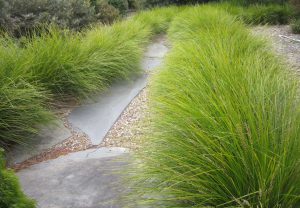
Property Management: A Higher Standard
Building Owners and Managers International (BOMA) is pleased to introduce the new Certified Manager of Commercial Properties (CMCP), a certification designed for early-career property professionals who are looking to validate their industry knowledge and take their careers in commercial real estate to the next level. 
As the only certification of its kind in the industry, the CMCP instantly communicates your ability to be an effective commercial property manager and your strong understanding of the responsibilities of the role. Earning the CMCP certification is the first step in building a successful career in commercial real estate.
CMCP Advantages
- Offers recognition in one’s career (typically 1-5 years of experience)

- Validates foundational knowledge in key areas of property management
- Evaluates readiness for additional training, responsibilities, and career advancement
- Quickly assists employers with on-boarding new property managers and assessing industry knowledge and career potential
- Backed by BOMA and BOMI Ceritification, Inc., the leaders in commercial real estate education training
Eligibility Requirements
- Four-year degree and 1 year of property management experience, or
- Two-year degree and 2 years of property management experience, or
- No degree and 4 years of property management experience, and
- 30 hours of verifiable education in commercial property management

CMCP Exam
- Exams offered at multiple testing centers throughout the U.S. and internationally
- Exam questions reflect body of knowledge for property management developed through market research and a Job Task Analysis conducted by BOMA and BOMI
- Membership in BOMA is not required
- Registration is $675, which includes application and exam fees and a candidate handbook.
Learn more about the CMCP certification and get on the early access list for more information at www.CRECI.org.

How to Plead Your Case as a Property Manager
The value landscaping has for commercial properties can often be underestimated by management. First impressions are the most lasting, and landscaping is often the first interaction a client or customer has with your business. So how do you provide extraordinary curb appeal that leaves a lasting impression without breaking the budget? If you are a property manager trying to convince upper management of the value of investing more in landscaping, here are some tips to help plead your case…

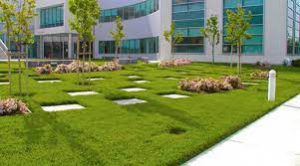
Commercial Real Estate and Retail Spaces Needs Landscaping That Will Set Them Apart
Turn your ordinary commercial landscape into a beautiful outdoor paradise. If you have high-end commercial real estate, it needs to look that way. Your landscaping needs more than just shrubs and mulch. You need a sophisticated, layered, and textured look that screams, “we are different and better!” You want to do more than get by in business; you want to thrive. Being more attractive than the competition will attract the clients that you need to succeed. 
Attractive Landscape Shouts that Your Company is Detail Oriented
Everyone appreciates an attractive space. Implementing a commercial landscape design into your existing space is more likely to attract new clients and keep existing ones. Companies that take time to enhance their outdoor appearances are seen as detail-oriented and proactive. Potential clients will see that you care enough to maintain your own space and automatically assume that the same level of care and attention will be given to them. Every good property manager knows the markets are fickle and have their ups and downs. To smooth out the peaks and valleys of property availability, it is important to have potential tenants or buyers in a pipeline, ready to take advantage of any opening that comes along. Having an attractive landscape that maintains its beauty year-round keeps your commercial property looking fresh and current. When a property feels active, people are more willing to wait for something- they want to be ready to take advantage of any opening.
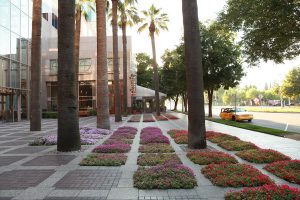
Attractive Commercial Landscaping Shows That You Value and Respect The Community You Work Within
Having a beautiful property that stands out not only affects your business but the community as a whole. Taking the time to craft a verdant commercial landscape carefully shows that you care about and are proud of being a part of your community. Installing benches for customers to sit or fountains for children to throw pennies in is a meaningful way for a company to contribute to the community members who fuel it. Making your community a better place through professional landscaping can increase your company’s goodwill and interest. At the end of the day, a good company that invests in its community also invests in its bottom line. Whether you are trying to attract tenants, buyers, or customers getting people to notice your property is the first step in getting them to become consumers of what you have to sell.

6 Questions Every Property Manager Should Ask Their Commercial Landscaping Company
When deciding who to choose as your commercial landscaping company, you should have a lot of questions. Do not be afraid to be thorough. Hiring a company to keep your property looking its best is important, and so is being satisfied with all of the answers you are looking for before signing a contract.
Not sure what to ask?
Here are some questions that every property manager should ask their potential commercial landscape contractor:
How Long Have you Been in Business?
Experience matters. You want a company whose portfolio includes accounts of your size and scope and has handled all the issues that come with maintaining a commercial property of your standing.

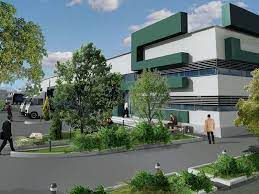
What Kind of Insurance Do You Have?
If a company doesn’t have the proper coverage and one of its employees is injured on the property, you will be held liable. The company you are researching should have worker’s compensation and liability insurance. You should also request a certificate of insurance (COI) from the company, as that will clearly stipulate the amounts of coverage it has.

How-And How Often-Do you Communicate?
Communication is key. You already have a full plate, and the last thing you need is anything else added to it. You need to know if the landscaping company you are considering working with will keep you up to speed on what services will be performed
 and when. Will they notify you when repairs and/or enhancements were completed and/or needed? Will they send you visuals (i.e., pictures, videos, etc.) before and after? You want to know that you’ll get a prompt, reliable response if you have a question or concern.
and when. Will they notify you when repairs and/or enhancements were completed and/or needed? Will they send you visuals (i.e., pictures, videos, etc.) before and after? You want to know that you’ll get a prompt, reliable response if you have a question or concern.
When you call a company’s office, you don’t want to get an answering machine and wonder when somebody will return your call. You want to speak with a real person right away.
Choose a company that has a dedicated customer service team ready to help you with any questions or concerns.
Can You Provide References?
A reputable, well-established company that does quality work should be eager for you to talk to their clients. This is an opportunity for you to talk to the company’s current clients and find out what they really think of your potential commercial landscaper.
Once you have a list of references to contact, ask plenty of questions:

- Is their commercial landscaping company reliable?
- Do they do what they say they will when they say they will?
- Are they available to talk when you need them?
Are You Full Service or Maintenance Only?
Your commercial property has a host of needs, including lawn care and lawn maintenance. But other needs arise, too. You may want property enhancements, like freshly planted annuals, irrigation systems or entrance beds to be renovated. You may also need pesticide assistance.
When one full-service company takes care of your property, they get to know your property inside and out. They’ll know exactly what it needs at what time, and they’ll notice potential problems before they get out of control.
What Sets Your Company Apart From Others?

A commercial landscaping company should have a whole list of reasons why they’re the best. If they can’t tell you what sets them apart, who can?
The answer you want to hear is lots of things.
Frequent communication. Friendly, efficient service. Their list should go on and on.
Compare, Then Choose The Growing Company, Inc.
We’re confident that once we answer all your questions, The Growing Company, Inc. will be your first choice for all your commercial landscape design and maintenance needs.
We’d love to talk with you about your landscape ideas, needs, and goals. We serve commercial properties in Sacramento, Roseville, Rocklin, El Dorado Hills, Placerville, Rancho Cordova, Elk Grove, Stockton, Woodland, Vacaville, and Fairfield.
Call us at (916) 379-9088 or fill out this short form to request a proposal and hear back from us right away!
We’d love to hear from you.

6 Tips on Reducing Water Use Outside Your Home
Using water outdoors is always challenging. Ensuring that your landscape is healthy and vibrant can seem difficult while trying to water as efficiently as possible. But it does not have to be. Below are a couple of simple tips or habits that will make an enormous impact when it comes to conserving water:
1. Use Water-wise Plants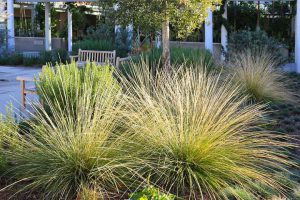
Check-in with your local landscaping company on the best plants for your area. It is best to use water-wise, California-native plants when possible.
2. Install Drip Irrigation & Add a Smart Controller
Installing a drip irrigation system and a smart controller can save 15 gallons each time you water!
3. Use Drought-resistant Trees and Plants
Using drought-resistant plants and trees can save 30-60 gallons per 1000 sq. ft. each time you water. The California Sycamore is a perfect example of a drought-resistant tree!

4. Adjust Sprinkler Heads & Fix Leaks
Properly-adjusted sprinkler heads can save you 12-15 gallons of water. Leaks as small as the tip of a ballpoint pen can waste about 6,300 gallons of water per month!

5. Set Mower Blades to 3″
Setting mower blades to three inches encourages deeper r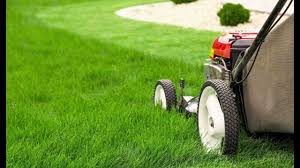 oots and saves 16-50 gallons per day.
oots and saves 16-50 gallons per day.
6. Use Mulch
Using mulch can save 20-30 gallons of water per 1000 sq. ft. each time you water.

Why You Must Have the Karl Foerster Feather Reed Grass?
While many other ornamental types of grass tend to arch outward, the Karl Foerster Feather Reed grass forms compact, erect clumps of narrow green leaves that send up stiff flowering stalks. This means that this ornamental grass adds a dazzling, vertical, architectural element to the landscape. These tall, narrow plants draw the eye as exclamation points. They are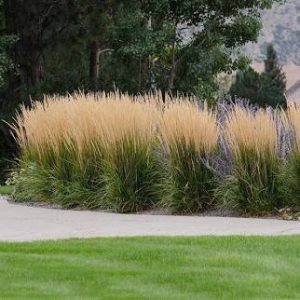 easy to grow and require minimal maintenance to retain their sculptured appearance. It was crowned the 2001 Perennial Plant of the Year and continues to be timeless.
easy to grow and require minimal maintenance to retain their sculptured appearance. It was crowned the 2001 Perennial Plant of the Year and continues to be timeless.
Main Appeal
German-engineered, this plant is meant to last. It embodies beauty, resilience, and endurance. Because it is clump-forming, the grass does not spread. It stays put in a nice, slow-expanding clump. The plant is not prone to suffer from diseases or pest infestations and requires very little fertilizer or even water, making it a sustainable option.
Feather Reed Grasses are nicknamed “motion grass” because it sways in the slightest breeze, similar to the Lomandr a. It sways to and fro in soft winds and whips back and forth in heavier ones. Their kinetic energy is sure to bring a dynamic element that will electrify your landscape design.
a. It sways to and fro in soft winds and whips back and forth in heavier ones. Their kinetic energy is sure to bring a dynamic element that will electrify your landscape design.
Plant Tips for Care
For best results, place the Karl Foerster in an area with full sun to partial shade. It will benefit from the morning sun and late shade location in climates that are hot and dry. But keep in mind that too much shade can decrease the number of blooms and make the foliage floppy. This grass is a sun-lover.
We recommend leaving the foliage and seeds heads throughout the winter. Enjoy the winter interest delivered by this gorgeous, award-winning grass!
In the spring, enjoy the surge of new growth. Ornamental grasses are fun to watch all year long, from their lush summer foliage to the high impact of golden flower stalks and seed heads in autumn.
Whatever you decide to do about your landscape, do not forget to consider the Karl Foerster. It is a workhorse that performs beautifully in modern, rustic, or formal design styles. Lean on this plant, and it won’t let you down !
!
Lomandra
Have you ever seen or heard the beautiful swishing and swaying of ornamental grasses? Not only are they acoustically appealing, but their dimension and movement send spectators into a hypnotic swoon. Rest assured that the Lomandra will charm you with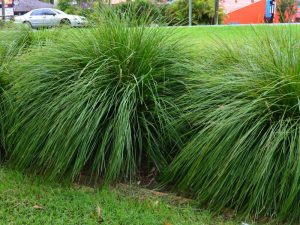 its dance. Native to Australia, it was further developed in New Zealand to include numerous cultivars. As an excellent visual enhancement to your landscape, Lomandra grass can’t be beaten in most of our temperate and warm climates.
its dance. Native to Australia, it was further developed in New Zealand to include numerous cultivars. As an excellent visual enhancement to your landscape, Lomandra grass can’t be beaten in most of our temperate and warm climates.
Main Appeal
Beauty and grace aren’t the only factors that make the Lomandra attractive. The main attraction is its maintenance, or better yet, its ability to endure the lack of. These grasses can thrive in drought-prone areas and sites with low maintenance needs. They are the perfect hybrid: beautiful and practical.
Caring for Lomandra Grass
Lomandra is suited for full sun or lightly shaded conditions. The foliage color may change slightly depending upon the exposure to sunlight, but the plant’s health will remain unblemished. Occasional watering is an important part of Lomandra maintenance. Once the grass has been established, it will be tolerant of drought, but the watering is for the thick clumps of glossy foliage.
In the unfortunate event t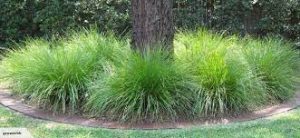 hat the grasses get damaged due to frost, wind, or time, cut them back 6 to 8 inches from the ground, and the foliage will spring back to life as beautiful as the first time.
hat the grasses get damaged due to frost, wind, or time, cut them back 6 to 8 inches from the ground, and the foliage will spring back to life as beautiful as the first time.
Pests or Diseases
Lomandra grasses aren’t usually prone to pests or diseases. In fact, some Lomandra grasses have developed a resistance to Phytophthora, or root rot.
Lomandra Grass Uses
When planted alongside edges, the Lomandra grass can slow down weed intrusion and provide shelter to young plants.
Its strong root systems make them the perfect candidate for growing on slopes and in areas that are prone to erosion. The roots help stabilize the soil along with trapping nutrients.
Whether you need a plant to stabilize a creek bank, create a buffer, serve as a groundcover, or add a beautiful aesthetic to your landscape, the Lomandra is the way to go. 